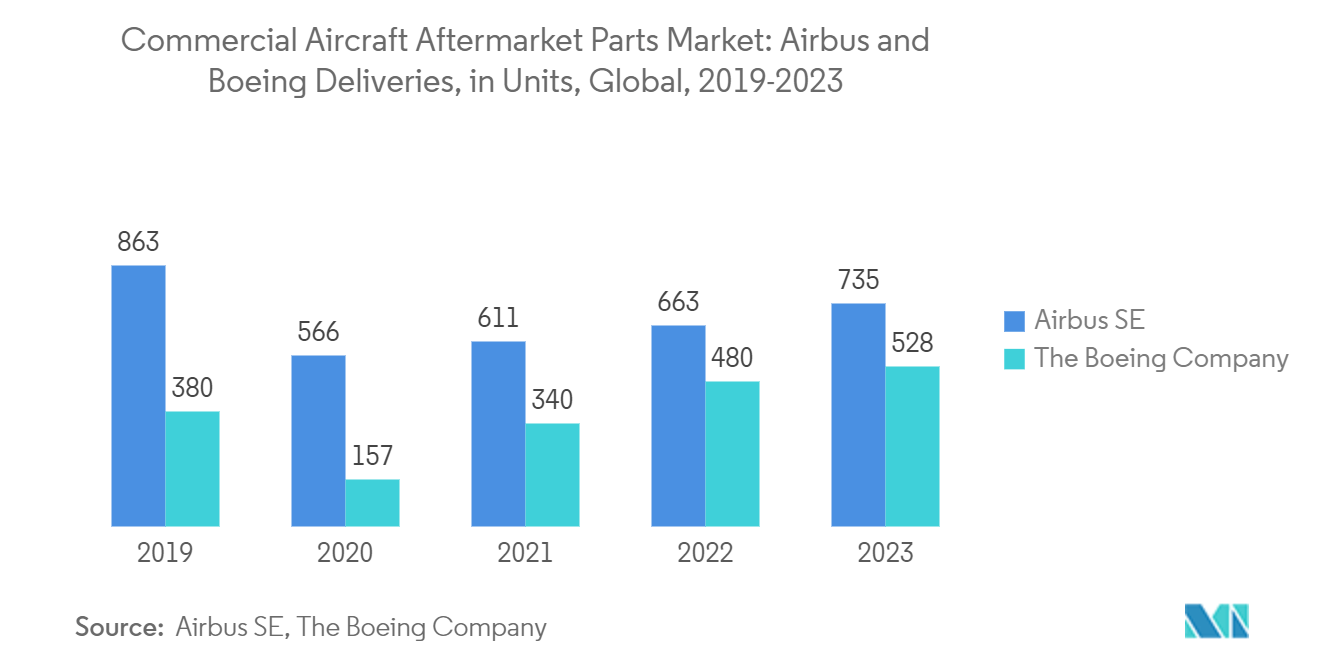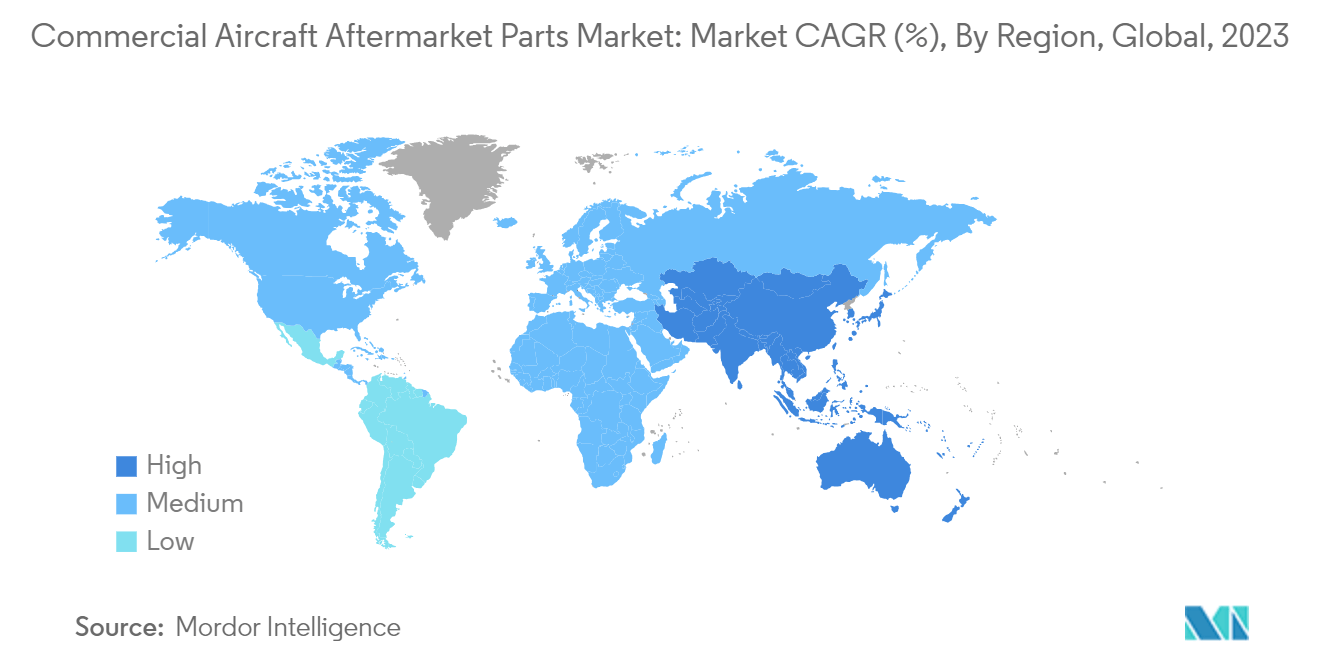Market Trends of Commercial Aircraft Aftermarket Parts Industry
Narrow-body Segment to Witness the Highest Market Growth During the Forecast Period
Narrow-body aircraft, in comparison to their wide-body counterparts, boast superior range capabilities and seat-mile efficiency. As airlines strive to enhance their market presence and connectivity, they are unveiling new routes. In Europe, air travel is rapidly increasing, propelled by rising disposable incomes, evolving lifestyles, and intensified competition among airlines. The proliferation of low-cost carriers in emerging markets is further fueling the market's growth. These budget airlines predominantly opt for narrow-body aircraft, which are ideal for short-haul routes and cost-effective maintenance. Consequently, the demand for narrow-body aircraft has surged, directly impacting the commercial aircraft aftermarket parts market.
For example, Ryanair, headquartered in Dublin, is Europe's largest airline, catering to a staggering 152 million passengers annually. Similarly, easyJet, another prominent LCC, operates an extensive network spanning multiple European nations, North African nations, Turkey, and Israel. Austrian Airlines, in 2023, continued its fleet modernization efforts, while Air France, since July 2023, has been progressively integrating new aircraft into its operations. As these airlines expand their fleets and flight frequencies, the wear and tear on aircraft parts is poised to drive demand in the narrow-body aftermarket parts market over the coming years.

Asia-Pacific to Dominate the Market During the Forecast Period
Asia-Pacific not only commands the largest market share but is poised for the most significant growth in the commercial aircraft aftermarket parts market. The surge in air travel, particularly in nations like India, China, Vietnam, Indonesia, Japan, and Taiwan, prompted regional airlines to expand their fleets to meet the escalating demand over the past two decades.
Consequently, the average age of aircraft in the region is projected to rise from approximately eight years historically to around nine years by the end of the forecast period. This aging fleet, in turn, is set to boost the demand for aftermarket parts as more aircraft undergo maintenance and require part replacements. Recognizing this trend, several key market players have bolstered their collaborations with Asia-Pacific customers.
For instance, in November 2023, Airbus inked deals with several Indian firms, including Aqus, Dynamatic, Gardner, and Mahindra Aerospace, to manufacture components for commercial aircraft. These strategic partnerships are poised to fuel the demand for spare parts and propel the commercial aircraft aftermarket parts market in Asia-Pacific countries throughout the forecast period.


